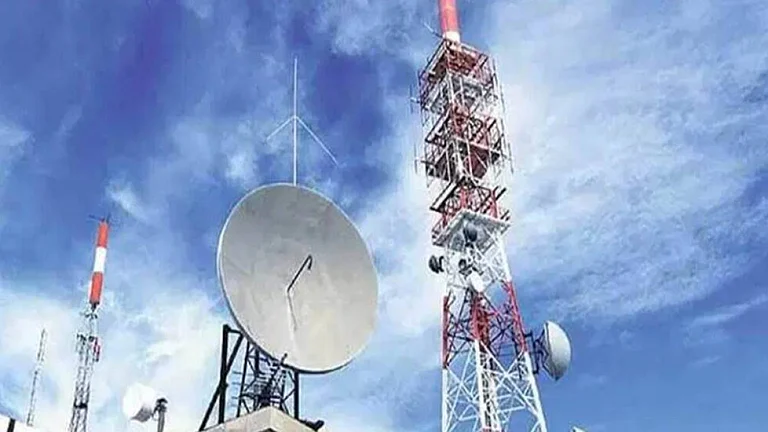
COAI, representing telecom operators, has renewed its opposition to private 5G networks, or Captive Non-Public Networks (CNPNs).
The industry body rejects direct spectrum allocation to enterprises, calling it “not tenable” and warning of risks to government revenue and national security.
This is in response to DoT’s proposal inviting enterprises to set up private 4G/5G networks through direct spectrum allocations.
Telecom operators argue the plan would give private firms benefits without equal regulatory or financial obligations.
Telecom industry body Cellular Operators Association of India (COAI), which represents the likes of Reliance Jio and Bharti Airtel, has once again voiced its opposition to the deployment of private 5G networks, also known as Captive Non-Public Networks (CNPNs).
This time, COAI is opposing the direct allocation of spectrum for CNPNs to enterprises, calling it “not tenable in India.” In a statement on Monday, the industry body warned that CNPNs could harm government revenue, national security, and the stability of the telecom ecosystem.
The comments came in response to the Department of Telecommunications’ (DoT) new proposal on CNPNs, which allows enterprises to set up their own captive, private 4G/5G networks by either using spectrum assigned to Telecom Service Providers (TSPs) or through the direct assignment of spectrum.
The guidelines, released on June 30, aim to provide “secure, high-reliability, and low-latency connectivity tailored to specific operational requirements,” according to the DoT.
However, telecom operators say the proposal would create an uneven playing field between TSPs and private entities, who would enjoy infrastructure benefits without comparable regulatory or financial obligations.
Why Telecoms Don’t Like CNPNs
A private captive network, or CNPN, is a dedicated network set up by an organisation—such as a company or institution—solely for its own use. According to US-based telecom testing company Simnovus, CNPNs are a key component of the 5G ecosystem, enabling industries such as manufacturing, logistics, and smart cities to harness 5G for innovations like the Internet of Things (IoT), automation, and real-time analytics.
In India, CNPNs were formally introduced in June 2022 when the DoT issued the “Guidelines for Captive Non-Public Network (CNPN) Licence,” establishing a legal framework for enterprises to deploy their own private 4G/5G networks by either leasing spectrum from TSPs or obtaining it directly from the DoT.
During India’s inaugural 5G spectrum auction, Adani Data Networks, a subsidiary of the Adani Group, purchased 400 MHz in the 26 GHz band across multiple circles for approximately ₹2.12 billion.
Even before this auction, COAI had written to then-Union Communications Minister Ashwini Vaishnaw, arguing that private captive 5G networks “will diminish the revenue so much that there will be no viable business case left for the TSPs, and there will not remain any need for 5G network rollout by TSPs.”
COAI has maintained that enterprises are the main potential revenue source for 5G in India, as consumer demand is already met by existing 4G networks. Operators have invested heavily in 5G and conducted successful enterprise trials targeting manufacturing, logistics, and healthcare. Allowing private entities to run CNPNs, the association says, would undermine the TSPs’ business case, reduce retail revenues, and make large-scale 5G rollouts unnecessary.
“COAI strongly believes that all enterprise 5G needs must be fulfilled through licensed Telecom Service Providers via spectrum leasing or network slicing, as this would ensure national security, revenue protection, and regulatory parity in this rapidly evolving ecosystem,” Lt. Gen. Dr. S.P. Kochhar, Director General of COAI, said.
India Still Doesn’t Have CNPN
Since the first 5G spectrum auction, India still does not have a fully operational private captive network. Adani Data Networks, the sole CNPN spectrum winner in that round, sold its holdings to Bharti Airtel in April this year.
The Adani Group did not disclose the reason or transaction value, but reports suggest it found deployment commercially unviable and informed the DoT about challenges in executing its planned use cases.
“Unlike TSPs, most enterprises do not have the expertise or scale to manage telecom infrastructure efficiently. What appears cheaper on paper could turn out to be more expensive and operationally burdensome in practice. Moreover, with continuous upgrades in both technology and the ecosystem, private networks would require frequent component upgrades—something TSPs are better placed to manage,” COAI said.
Simnovus points to three major hurdles for CNPN adoption in India. First, high net worth requirement for spectrum acquisition excludes many small enterprises. Second, high spectrum costs—both upfront and recurring—discourage even large enterprises, especially in low-margin sectors. And lastly, limited awareness and regulatory complexity deter companies, as many find application procedures and benefits unclear.
Did DoT Address These Issues?
In its new guidelines, the DoT kept the eligibility threshold for CNPN at ₹100 crore and proposed direct spectrum assignment to CNPN licensees—easing at least two of the hurdles.
It also noted that certain frequency bands initially proposed for CNPN lacked a viable device ecosystem. “During recent analysis, it was observed that device ecosystem for CNPN is mostly available in IMT bands, and 5G technology has also considerably advanced with different use cases. Also, system integrators are keenly interested in establishing CNPN-based networks,” the DoT said.
However, COAI insists it is “misleading to state that setting up private networks independently would be cheaper for enterprises,” arguing that deployment requires significant capital expenditure on equipment, spectrum management, security, network maintenance, and skilled personnel.
The industry body also criticised comparisons with countries like the US, Finland, Germany, and the UK, saying those private networks are typically located in remote or geographically isolated areas with limited public network coverage.
“In India, however, most industrial corridors and enterprise zones are already well-served by telecom operators, leaving no coverage deficit,” COAI said.
It further warned that private networks managed by unlicensed or foreign entities could pose national security concerns, as they are not subject to the same compliance, interception, and regulatory obligations as TSPs.
Notably, BSNL recently signed an MoU with Numaligarh Refinery Ltd (NRL) to deploy India’s first 5G CNPN in the refinery sector.
However, when it will become operational remains unclear, and it is yet to be seen how much demand the DoT will attract in its latest attempt to promote private captive networks.


































